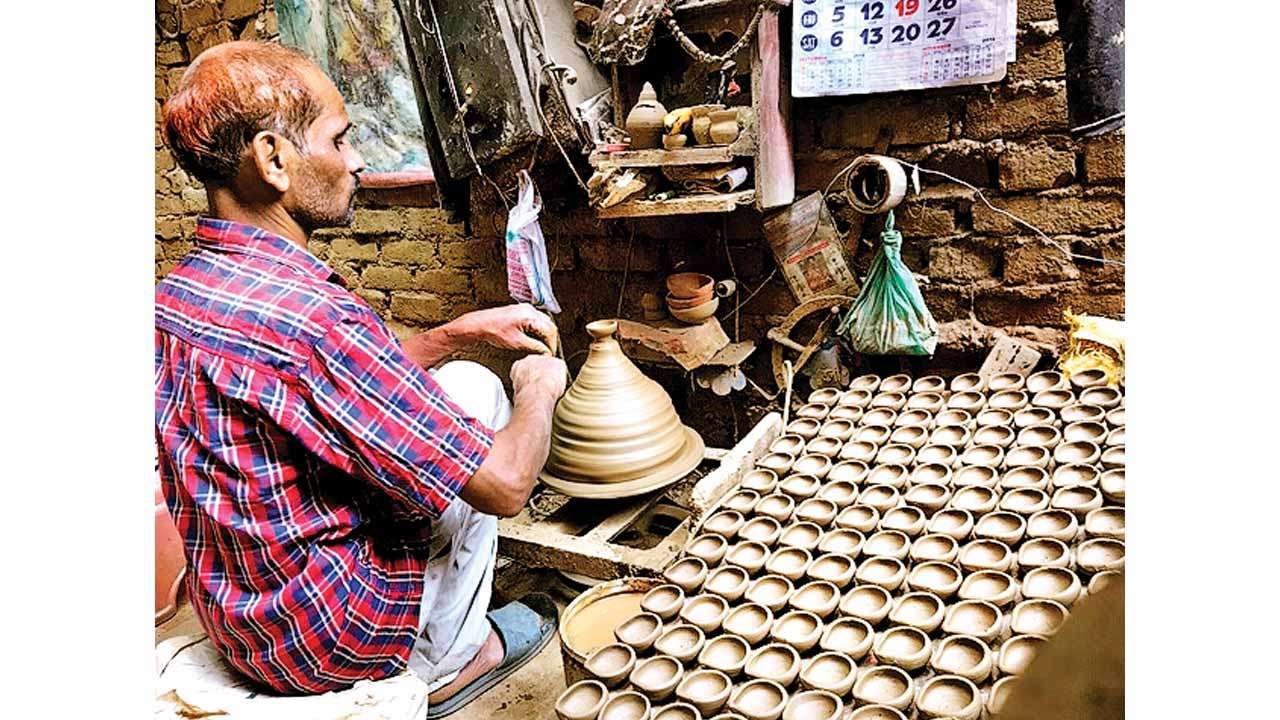
The internet is crackling with Diwali do-it-your-selves. One site explains nine steps to make a Diwali lamp. Another tells us about seven creative ways to design a Diwali lantern. England’s The Guardian newspaper on Sunday outlines creative, not to mention mouth watering, recipes for making Indian sweets on the festival of lights. Come to think of it, there is no reason why we cannot build and operate things Indian on a day as auspicious as this. As this paper highlighted on its front page (‘Hands that make your Diwali brighter,’ Monday, October 29), thanks to Diwali, certain typically Indian traditions have endured. The potters of Paharganj, a part of Delhi not yet taken in by modern razzmatazz, belong to this hoary practice. They are the one of the biggest suppliers of clay diyas or lamps to the capital.
While for most people, Diwali comes once in a year, for these folks, the festival begins roughly six months in advance. Naturally, this is the period that determines their earnings. It takes time to identify designs and set into motion the process of producing earthen lamps. The most popular of them, quite literally the ‘tau’ (father’s oldest brother) is Dev Karan Prajapati, who has been molding earthen lamps, as part of family business, ever since he was five. And this was more than 50 years ago. Sure, there are other festivals too, like Chhath where lamps are popular, but it is only Diwali that artisans such as him get the cutting edge advantage. Most of them take to other professions after the Diwali fever subsides. Naturally. But in these six months, a regular, indigenous cottage industry comes into being.
The good thing is that the many-splendoured beauty of Diwali is also synonymous with torans and kandeels that attach an ethnic touch to homes. And this is precisely the period —roughly just over a week from the D-Day — that the market is crowded with all these home- made Diwali goodies. The centrepiece of the festival, the Rangoli, is being decorated on the entrances and inside the main halls of homes, depending upon the size of a habitat. They come in all shapes and sizes. There are readymade Rangolis and floating Rangolis with crystals, kundans and mirrors available in the market, lending an unmistakable touch of elegance, all homemade or bought from the local market, produced by local artisans.
There was a time when Chinese crackers and candles had become popular during Diwali, mainly coming in as cheaper alternatives for Indian products, but that trend, hopefully, looks like a thing of the past. For one, crackers of all hues are a strict no-no, so the origin of the product becomes immaterial. Add to it, buying gold in Diwali, a favourite of many Indian families, and the quantum of home buys climbs up significantly. According to estimates, most of Diwali’s gold transactions take place in the Rs 50,000 to Rs 2,00,000 range. It works for the burgeoning middle class. The market sentiment, too, has picked up with the government taking the decision of putting gems and jewellery industry in the 3 per cent GST slab.